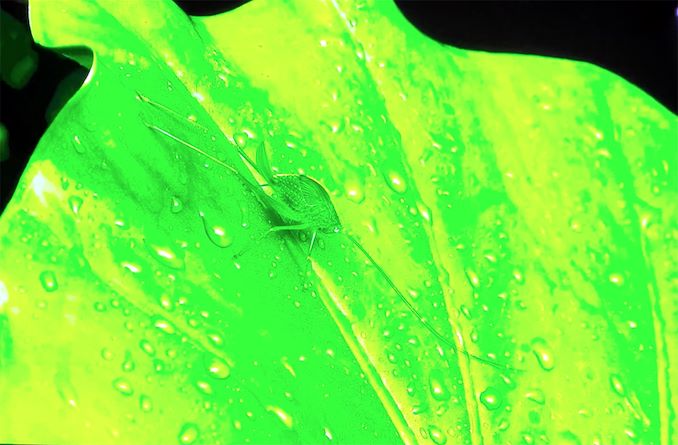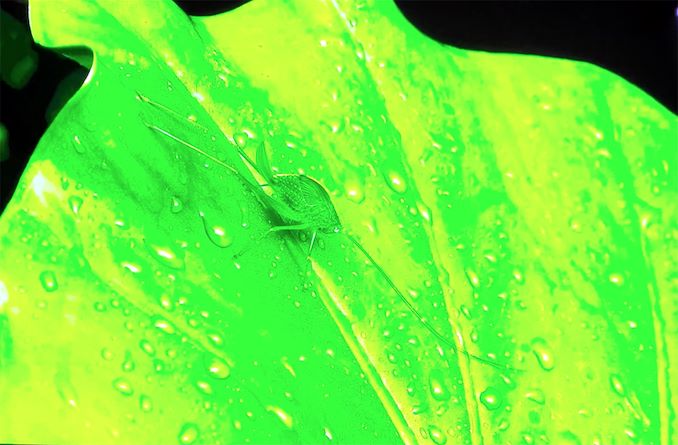TCL Shows Off 132-Inch Micro LED 4K UHDTV: 24,000,000 Micro LEDs
by Anton Shilov on September 13, 2019 2:00 PM EST
Direct view Micro LED displays are a relatively new display technology that so far has been publicly demonstrated only by Samsung and Sony, the two of which tend to experiment with variety of technologies in general. At IFA last week TCL, a major maker of televisions, threw its hat into the ring by demonstrating its ultra-large Micro LED-based Ultra-HD TV.
Dubbed the Cinema Wall 132-Inch 4K, TCL’s Micro LED television uses 24,000,000 individually controlled LEDs as RGB subpixels, and features a 1,500 nits max brightness level as well as a 2,500,000 contrast ratio (good enough to compete against OLEDs). The manufacturer claims that the TV can display a wide color gamut, but does not disclose whether they're using DCI-P3 or BT.2020.
Like other early-generation display products, TCL is not revealing if and when plans to release its 132-inch 4K Micro LED TV commercially, but the fact that that it has a device that is good enough to be shown in public (see the video by Quantum OLED channel here) is an important step. Just like other makers of Micro LED televisions, TCL might want to increase peak brightness supported by these devices, as many modern titles are post-produced using Dolby’s Pulsar reference monitor for Dolby Vision HDR, which has a peak brightness level of 4000 nits.
Numerous TV makers are currently investigating Micro LED technology as a viable alternative to OLED-based screens. While OLEDs tend to offer superior contrast ratio when compared to LCDs, they have a number of trade-offs, including off-axis color shifting, ghosting, burn-in, etc. WOLED has mitigated some of these issues, but it has also introduced others due to the inherient limitations of using color filters.
By contrast Micro LED TVs are expected to be free of such drawbacks, while still retaining the advantages of individual LEDs like brightness, contrast, fast response time, and wide viewing angles. As an added bonus, Micro LED TVs will not need any bezels and can be made very thin.
Related Reading:
- Sony Develops 16K Display: A 783-Inch ‘Crystal LED’ Screen
- Samsung at CES 2019: 219-Inch and 75-Inch Micro LED Ultra-HD TVs Demonstrated
Sources: Quantum OLED, MicroLED.info, LEDs Inside













74 Comments
View All Comments
Oxford Guy - Saturday, September 14, 2019 - link
Reposting these blown-out overprocessed images is embarrassing. It takes a few seconds with the Curves tool and the Saturation tool to get the same ugly results, on even a monitor with 50% of sRGB.Companies peddling the latest gimmickry, like 8K, must really think we're stupid because they give us a bunch of heavily-processed images and brag about how everything looks "painted on". That nonsense happened something like two years ago already. In reality, unless the person looking at the images has an 8K set, the images are completely worthless.
In exactly the same way, none of the images in this article have any real-world relevance since we don't have the Micro LED set to look at them on.
Oxford Guy - Saturday, September 14, 2019 - link
Tech sites like this one, Techpowerup, and others lose credibility when they post press releases as if they're news and especially when they post intentionally misleading images.Oxford Guy - Saturday, September 14, 2019 - link
I am reminded of the odious practice of having herds of female models to post with things like motherboards, too — as if even one woman in the entire world who looks like they do and dresses like they do has even the slightest interest in any of those kinds of products."Oh, yes... I just love the color scheme on that motherboard!"
nandnandnand - Sunday, September 15, 2019 - link
I'll take an Asian booth babe or cosplay model showing off a smartphone, motherboard, TV or whatever, over photos of how great this TV's color and brightness is. Photos I'm currently viewing on a deteriorating 768p display.